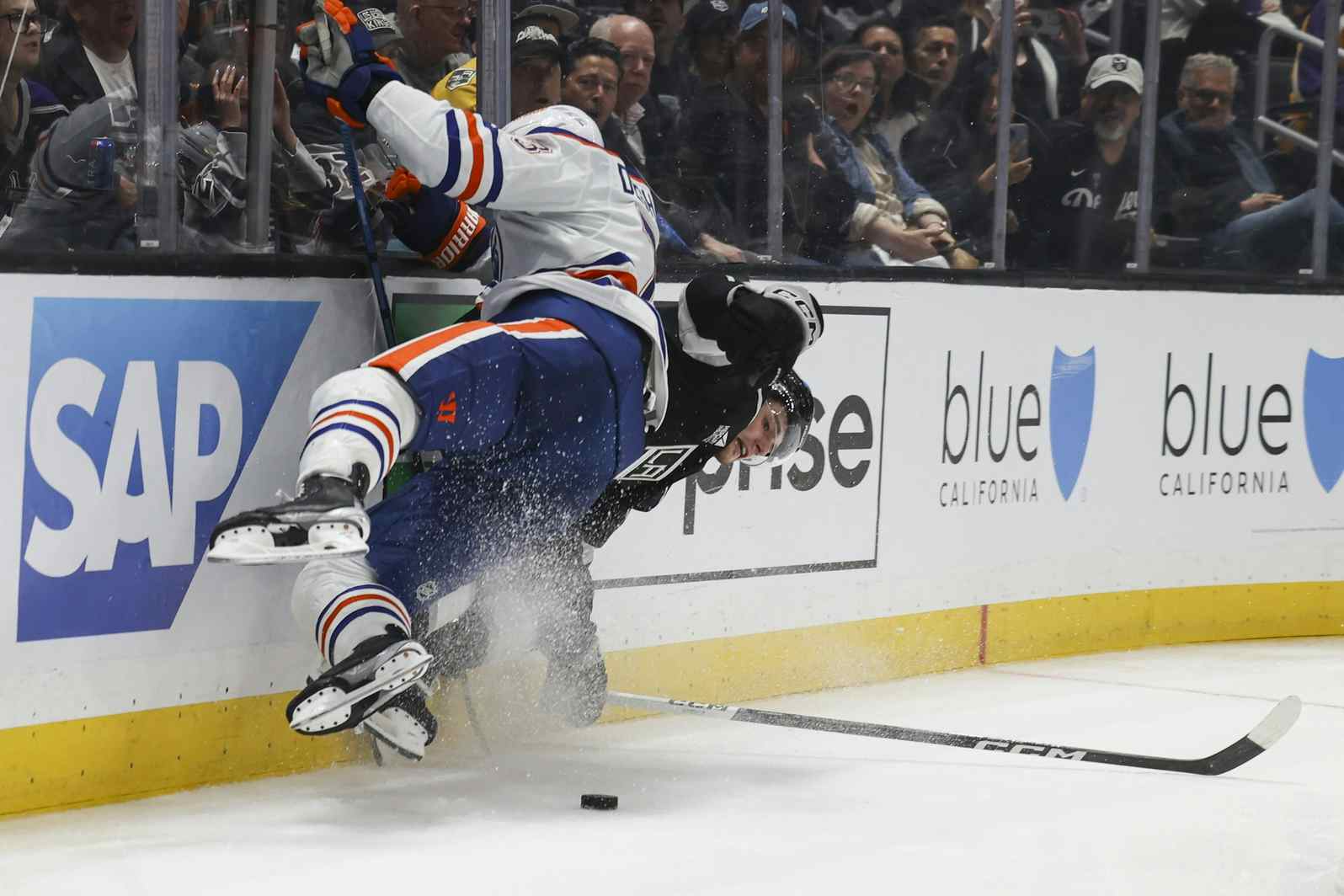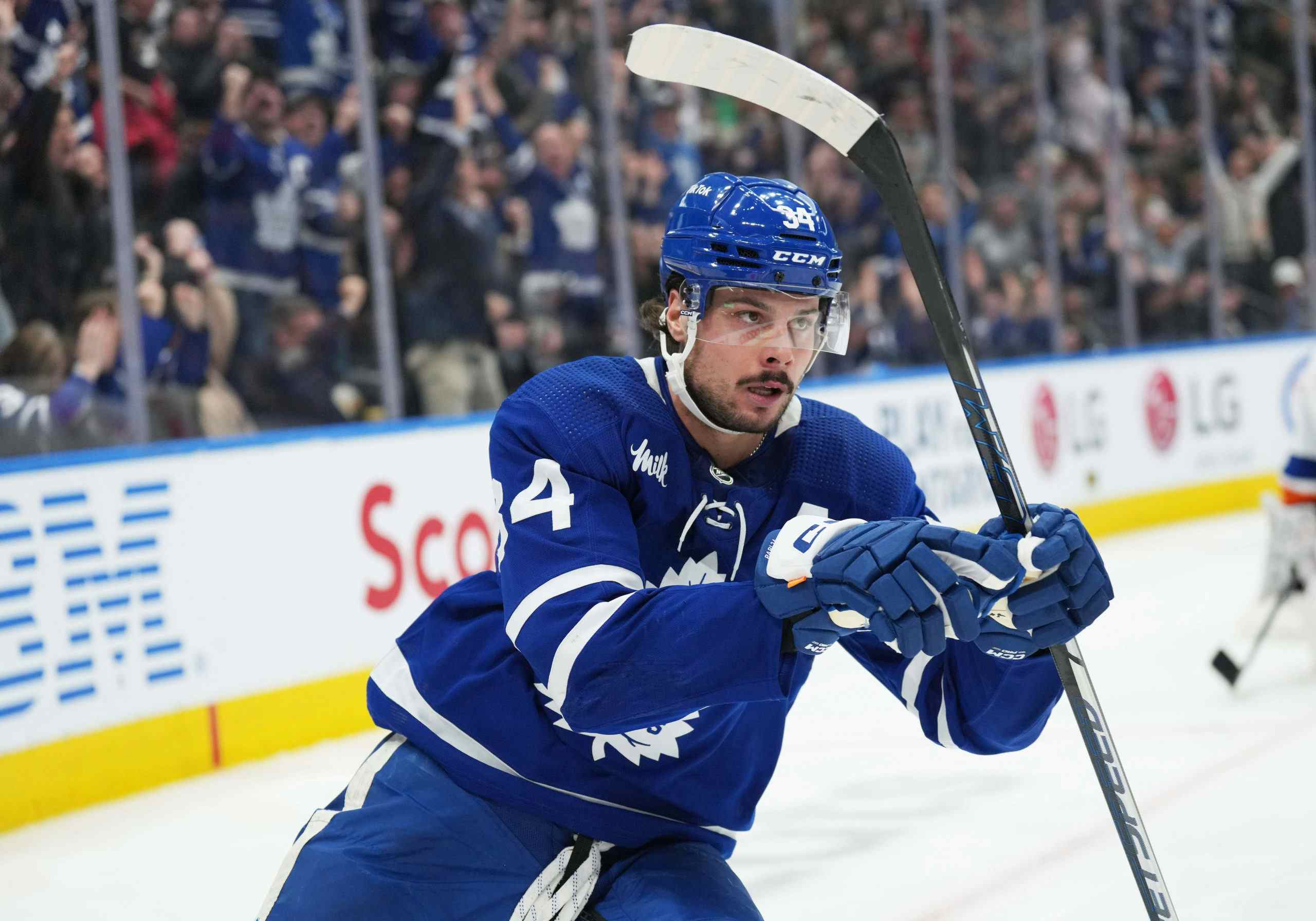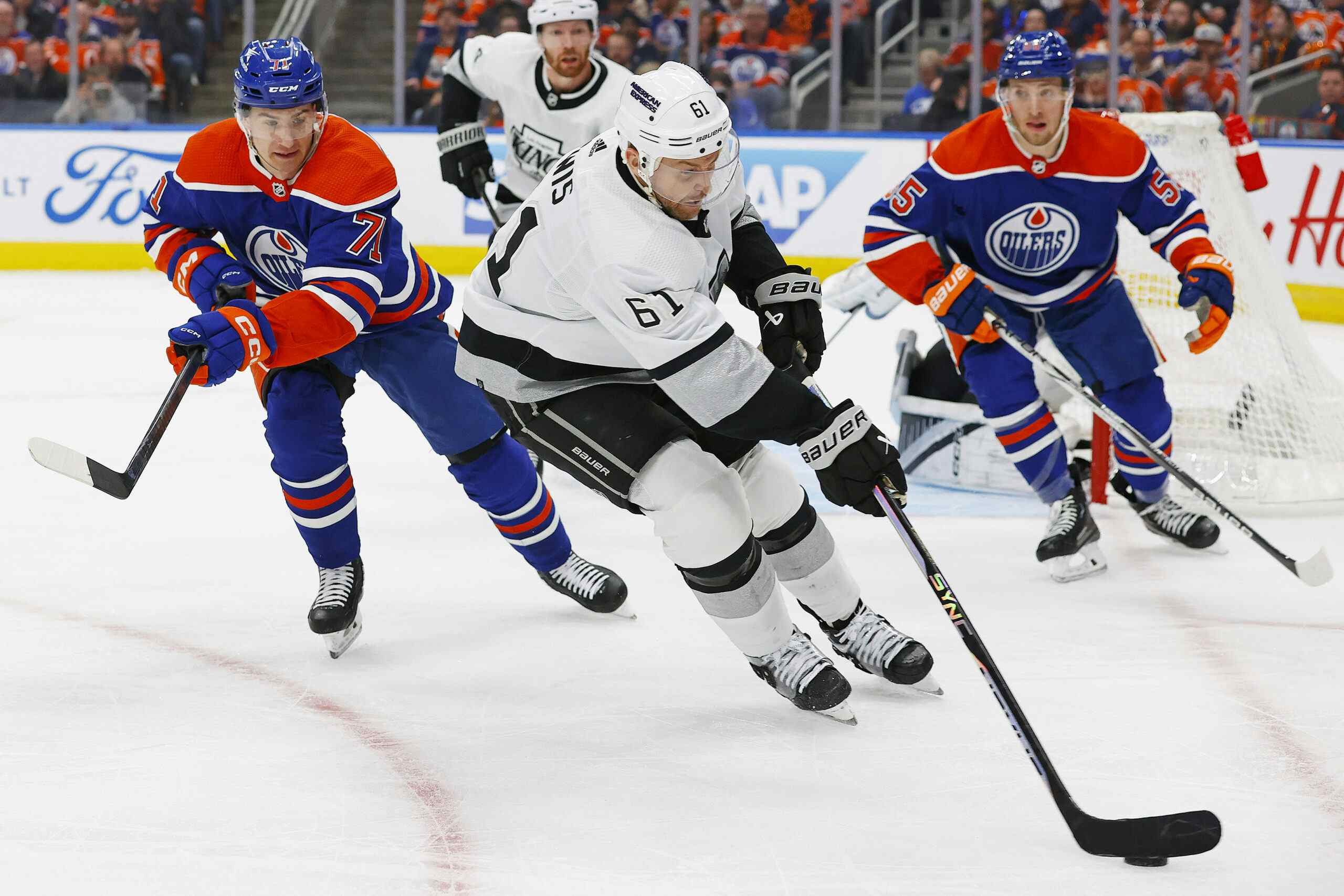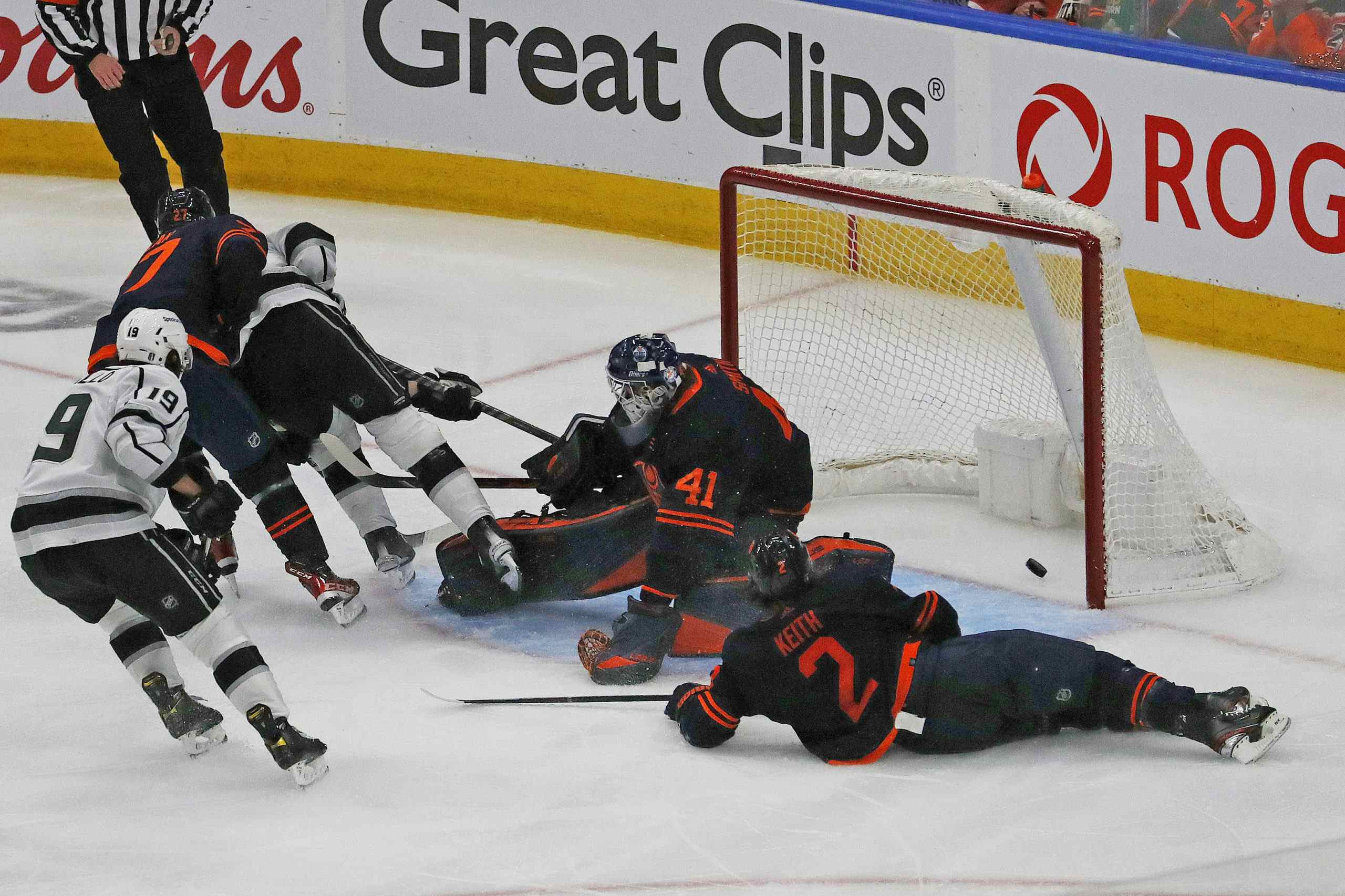Oh Lou! You Devil!
By RexLibris
11 years agoThe Devils made it to game six of the Stanley Cup finals this June. The year before they finished 22nd overall in the league, won the draft lottery and moved up to select Adam Larsson 4th overall. Prior to that the Devils have been a model of a consistent and competitive franchise. Full steam ahead, then for these Devils? Maybe if your name is Edward Smith.

A cursory look at the Devils would tell you that things are likely to get very interesting there in the next few years. Lou Lamoriello, or the Professor as he is commonly known around the league, is the man who has guided this franchise from its origins as a Mickey Mouse Club franchise to a synonym for championship-winning defensive hockey (and a powerful alternative for insomniacs who don’t respond to drugs). He is 70 years old and rumoured to be close to retirement. Their franchise goaltender, a gold-medal Olympian (twice) and first-ballot hall of famer, is two years away from hanging up his skates and franchise 28-year old winger/center Zach Parise was lost to free-agency this summer. The Devils were facing imminent bankruptcy, with some rumours circulating that the NHL was paying their bills, prior to owner Jeff Vanderbeek (not the Dawson’s Creek Vanderbeek) restructuring his debt to a more manageable $18 million. The team’s top prospect, Jon Merrill, was suspended for the first 24 games by his NCAA coach on account of “violating team rules” – two consecutive 12-game suspensions he incurred at University of Michigan – and just after being reinstated this season suffered a cracked vertebrae in his neck and is expected to be out for six weeks.
The Devils have the oldest roster of any team in the NHL and their core group of forwards are a hop skip and jump away from free-agency. The club is well below the salary cap, however much it may be, and the financing appears to be there for the time being. The team isn’t getting any younger, they don’t have an imminent infusion of youth in the elite positions, and the price of acquiring those players is outside the scope of what the Devils can afford to pay by way of player assets.
If we agree that teams tend to go through life-cycles, it would appear as though the Devils are nearing the end of a very long and prosperous one.
The Business End

Pgoto: Michael Kooiman/Wikiimeda/CC BY 2.0
The Devils may be the team that benefits the most from the lockout this year. Let me re-phrase that, Devils owner Jeff Vanderbeek may benefit more from this lockout than any other NHL owner. Not because the team has a bumper crop of young prospects that can mature and develop while the rest of the league goes on hold, but because with a new CBA being determined, lenders were willing to be patient and allow Vanderbeek time to restructure approximately $77 million in debt into $18 million (think I could restructure my credit card debt down by the same percentage? Me neither). You can read about it here.
The Devils have been an extremely well-run business operation for over twenty years now. They consistently went up against the big spenders of the NHL in the Rangers, Flyers, and Leafs and managed not only to maintain a competitive roster but one that won several championships. When the salary cap was introduced, the Devils’ payroll only dropped by 8.25%, to $44.895 million. Compare that with their rivals in New York, Philadelphia and Toronto whose payrolls were cut by 45%, 37% and 41%, respectively, in order to fit under the cap. While their payroll was still the highest in the league at the time, when put into the context of Stanley Cups won around that period, it gives you a pretty good idea of how well the team was structured and transitioned to the new financial landscape of the league.
That is Lou Lamoriello’s doing, as CEO, President and GM of the team. The previous owners of the team, Puck Holdings/YankeeNets, had allowed Lamoriello a great deal of autonomy in running the team, primarily because their focus was on basketball and baseball. Vanderbeek appears to have adopted some of the same hands-off approach in most areas, save one that we’ll get to later. Probably a wise move.
Vanderbeek is an interesting individual and has had contentious dealings with the city almost since day one of his ownership. For more details on the Vanderbeek – City of Newark relations you can read my article about Newark’s arena negotiations here.
Suffice to say, there is a great deal of unrest surrounding, but thus far not reaching too far directly into the franchise, both financially and politically.
About Lou Lamoriello

If there were one NHL GM I would want to understudy for it would be Lamoriello. He could probably teach a dozen NHL GMs today how to do their jobs. When he retires it would be a coup if any other franchise could retain his services as a consultant or advisor to their management group. Lamoriello deserves the bulk of the credit for anything the Devils have accomplished over the last 23 years, perhaps even more than some of the players. I’ll talk a little more about Lamoriello in the summation, but as we cover more of the organization I wanted any criticism to be tempered with the knowledge that were I looking for a GM for a franchise, Lou Lamoriello would be an ideal man for the job.
What the heck was Lou thinking?
For a guy as smart and savvy as Lamoriello, there are some things that I just don’t understand. On that point, we can take the statement above and apply it to a couple of situations recently.
Let’s start with the Kovalchuk signing. For the record, my personal belief is that both the initial contract offer, the one that the league threw out and for which the franchise was harshly fined, and the second, were driven by ownership. The Devils have a history of being run by management wish ownership keeping the internal workings at an arm’s length. The Kovalchuk deal signalled a change there.
Vanderbeek was a season-ticket holder during his time as minority owner and once acquiring a majority interest, left his job at Lehman Brothers to work full-time on the team. That was probably not the right decision. Following the initial Kovalchuk signing, Lamoriello essentially stated that the term offered was under the direction from Vanderbeek and not from Lamoriello. I’ll put it this way, when the CEO, President and GM says “as far as what the financial commitment is and that aspect of it, that was out of my hands” (read more here) about a contract negotiation, its probably a hint that ownership was running the discussions. We’ve seen this kind of interference before, in contracts like Rick DiPietro’s. They usually end badly.
To an extent, Vanderbeek’s involvement exonerates Lamoriello from the initial blame of the bad contract, but as we shall see, the consequences thereof and how they have been dealt with are his to bear.
Given that it was the owner, the one who has had all the financial issues of late, making that kind of commitment, there are two reasonable responses: it’s his money to lose so let him dictate the terms, or, if he couldn’t guarantee that he could afford to pay out the full amount of that contract he was an idiot for offering it. In this situation, I think both apply.
*If some of the new provisions in the NHL’s recent CBA offer come to pass, then the Kovalchuk deal could go from potentially bad to a disaster-waiting-to-happen.
This appears to be the one instance of Vanderbeek directly interfering with the running of the hockey team. Readers of my rebuilding series may remember that other times an owner has had a direct impact on contract negotiations it almost always leads to a regrettable result: Rick DiPietro, Shawn Horcoff and others come to mind.
It was a massive mistake to make that contract offer considering what we know today of the club’s finances. They have Kovalchuk under contract now until the 2025-2026 season, when he will be 42 years old. I don’t know what the economics of salary inflation will look like in 2025, but I’m pretty certain that if there is an NHL, and the Devils are still playing in it, no 42-year-old player is going to be worth the cost of keeping over $6 million on the books. 42-year old Teemu Selanne made $4.5 million last year, by comparison. Will Kovalchuk be as effective 12 years from now as Selanne is today?
In addition, that contract put into motion a series of events that led to Zach Parise, a younger left-wing/center, leaving to explore free-agency (which in turn led to an equally absurd contract in both money and term). It also left the organization with a ticking time-bomb on its roster. The team now has an expensive veteran left-winger in Kovalchuk along with a total of seven pending unrestricted free agents in Travis Zajac, Patrick Elias, Dainius Zubrus, David Clarkson, Cam Janssen, Marek Zidlicky, and Peter Harrold. Eight more UFAs are set to follow at the end of next season, including both goaltenders. In total, there are only four players currently signed past the end of the 2013-2014 season, Kovalchuk, Anton Volchenkov, Bryce Salvador and Andy Greene. Not quite the nucleus of an NHL core, in my opinion.
This wouldn’t be such a bad thing were there a clear succession plan wherein one could point to an emerging core that will step in to take the place of so many departed players.
Traditionally, this has been Lamoriello’s modus operandi, creating a consistent and steady stream of players coming into the roster as others leave. It has resulted in a high degree of stability and predictability for the organization and the players. That continuum appears to be coming to an end. When we examine the prospect depth of the organization it becomes clear that there do not appear to be any future forwards capable of replacing the contributions of Zajac, Elias, or Parise.
Add together the fact of so many expiring contracts, along with a significant contract for an impact player entering the declining years for forwards – as well as all of the consequences thereof – in addition to the glaring lack of development of future core players, and it all combines to illustrate a future for the Devils that looks very murky indeed.
On to our next point: the penalties incurred and ramifications of the Kovalchuk signing. When the NHL came down with its penalty for the obvious attempt to circumvent the salary cap when signing Kovalchuk, the full impact of the trade with Atlanta was perhaps not keenly felt. To begin with, the Devils emptied their already-weak forward prospect depth to acquire Kovalchuk, as well as giving up a 1st round pick in 2010. The trade itself was somewhat of an underpayment relative to Kovalchuk’s abilities, as he became a 1.0 ppg player almost immediately for the Devils that season. Lamoriello did well to negotiate a trade that, relative to Kovalchuk’s market value, was a steal for the Devils considering what Winnipeg (then-Atlanta) has today to show for it.
However, it was in the re-signing that the franchise doubled-down in order to keep him, and paid what I consider to be the higher price. In order to retain Kovalchuk’s services the Devils tried an end-run around the salary cap and were punished for it by the league, to the tune of a $3 million fine, a forfeit 3rd round pick in 2010 and a forfeit 1st round pick sometime between 2011 and 2014. The Devils elected to retain their draft pick in 2011 as they finished poorly and won the draft lottery, moving up from 7th to 4th overall, where they selected Adam Larsson. The following June the Devils drafted 29th overall and selected Stefan Matteau, considered by some to be a potential 3rd line center. That means that the franchise must decide to forfeit for either the 2013 draft, a year considered deep in talent and which boasts a number of potentially high-end forward prospects, or the year after (I’ll come back to this in a moment). The first part is on Vanderbeek, he bears responsibility for essentially instructing his GM to attempt to circumvent the salary cap. The latter point is, to the best of our knowledge today, the fault of Lamoriello.
To that end, the final tally of the cost in acquiring Ilya Kovalchuk was in the range of two 1st round picks (one yet to be determined), a 2nd and a 3rd round pick, Anssi Salmela, and perhaps the ability to retain Zach Parise, not to mention any other pending UFAs should the team prove unable to re-sign them to contract extensions. That is a very heavy price to pay for one player. It should be noted that at the time of the lockout the Devils had approximately $14 million in cap space, so the room is there, provided the financing is available.
Finally, this is one decision that really baffled me. This past draft year was not considered to be very strong past the first five or ten picks, and for a team that had previously fallen to the bottom of the league a year earlier, and was yet facing the chilling prospect of forfeiting a 1st round draft pick, why on earth would one choose to retain the 1st round pick when it was 29th overall? They weren’t going to forfeit a lower pick without winning the Stanley Cup. It was the absolute best outcome fate could have dealt the team, save for winning a Stanley Cup, in the face of their pending penalty. Yet, Lamoriello chose to defer. It defies logic.
The team let the NHL know that they would retain their pick following the end of the season, when they knew where they would be selecting. I’ve read some very good articles about the time-value of money as it relates to the Devils. I well understand the concepts and the risks involved. That being said, ranking the potential development of a 29th overall pick in a weak draft year against what could very well be a 20th or 15th, or even a top ten pick, and in what is likely to be a deeper draft year, is a very risky move. For a franchise that has never shown an interest in rushing prospects to the NHL, deferring a 1st round selection for a year on the condition that the prospect acquired likely has a higher potential ceiling is not only viable but a sign on foresight and good management.
This isn’t a GM with a tenuous hold on his job who needs to roll the hard six. The GM position is Lamoriello’s to take to his grave, should he so desire, and as such it could very well become his problem to solve. Or at the very least one that he reluctantly presents to his eventual successor.
Devils’ Details
Anyone care to guess where the Devils fall on Corey Pronman’s ranking of NHL franchises by prospect depth? 27th. For all the grief I give to Flames fans over their farm depth or when I was taking the Stars to task for a poor prospect system, the Devils are worse. Only the Coyotes, Sharks and Flyers are considered to be in rougher shape – a team that has been hamstrung over ownership issues, and two others that have been emptying their prospect pools to get to the top of the heap for several years now.
The Devils have several promising defensive prospects (of course they do), the bad news is that their top prospect is Jon Merrill, whom we have discussed already. After that Eric Gelinas and Alexander Urbom are the next two best potential-NHL talents in the Devils’ ranks. Both are considered to be optimal second-pairing defenceman if they can make the NHL. There is only one goaltending prospect listed in Pronman’s top fifteen players for the Devils. This fits with a common pattern I have noticed in reviewing the prospect lists for franchises: often the strongest NHL position on a team’s roster is lacking in system depth at the development level – a sort of organizational blind-spot.
On the offensive side of the puck, things are pretty bleak. Their top-rated prospects are all in the mould of depth wingers or centers, player who ought to max out their careers playing on the 2nd line at best, behind or with more talented players and contributing a solid effort on the penalty kill every night. The Devils have graduated several notable forwards recently in Adam Henrique, Mattias Tendeby and Jacob Josefsen. All three appear to be promising young players, and there are likely twenty or more teams around the league that would happily add any of the three to their roster today if they could. However, none projects to be an elite point producer over the course of their career. Henrique had a phenomenal season this past year and was in the Calder Cup running against Gabriel Landeskog and Ryan Nugent-Hopkins. However, he was playing a support position with high-end players in Parise, Kovalchuk, Elias, and Zajac, and as a 2008 draft pick, was nearly four years older than his two competitors. It is just as likely that his point total from last year could be a career average, rather than the promise of more to come.
The Devils have no internal prospects or players that can step in to replace Zach Parise and apart from the three young players listed above they’re entire forward roster is made up of aging players most of whom are approaching unrestricted free-agency.
In the previous article discussing the Stars, a good comment was made that I might be writing with a bias towards an Oilers-centric strategy, relative to drafting and prospects. To that end, the point I am trying to make here with the Devils is that they are beginning to lose their core forward group, and while there are prospects on the defensive end, there are no options available at present for graduating impact players. This means that impact players will need to be acquired in the very immediate future, either by trade or by draft. My criticism is that the organization has always made a point of promoting roster continuity. They are failing in that regard now, and part of that break from what has been, until now, a sound strategy, would seem to be on account of the Kovalchuk signing, coupled with a recent downgrading of their drafting record.
Drafting and developing players as a means to building a good team is, in my opinion, virtually undebateable. I am not encouraging every team to aim for the draft lottery, but to neglect the draft, and the occassional opportunities it can provide, is to neglect a crucial source of asset acquisition. Those who argue that players such as Jordan Eberle and Claude Giroux prove that you don’t have to draft in the top five to find good players are correct, but by the same token, if you don’t draft them how else do you expect to acquire that talent, shy of on the volatile free-agent market, and likely at or following the peak of that player’s career?
The drafting option is made the more difficult in that the Devils, contrary to some popular belief, don’t tend to draft and develop a great many impact players. In fact, reviewing their draft record was something of an eye-opener for me. I had always believed that the Devils were a smarter organization than most, especially when it came to drafting. Certainly in the past they have made several very shrewd picks, most notably Martin Brodeur at 20th overall and Zach Parise at 17th. However, these examples tend to be few and far between.
The truth is that their drafting system has, outside of a few bumper crop years, produced very little by way of elite-level players. There are familiar names, Scott Gomez, Brian Gionta, Sheldon Souray, Michael Rupp, Mike Commodore, Zach Parise, Paul Martin and others. However, there is a noticeable absence of high-end player identification and development in their system – keeping in mind that their dominance in the NHL did result in a lower drafting order for much of that time period.
As for the Devils development system, the two teams that the Devils have used recently as AHL affiliates, the Albany River Rats and the Lowell Lock Monsters, later renamed the Albany Devils, had losing records from 1999-2000 to 2006. Even today, the farm team in Albany is showing poorly, failing to climb any higher than 4th in their Atlantic division since becoming affiliated with the Devils.
The trade option is perhaps even less likely as the Devils’ lack the necessary surplus of talents usually associated with acquiring elite players, made all the more difficult with the imminent forfeiture of a 1st round pick.
Age Before Beauty

Photo: slgckgc/Wikimedia/CC BY 2.0
The average age for the Devils’ 2011-2012 roster was 29.34 years. Detroit was the next highest with 29.178. The Flames were further down the list at 27.7 years of age and the Oilers were in the middle of the bottom third at 27.197. Colorado was the youngest team in the NHL with an average age of around 26 years old. Where I’m going with this is that the Devils desperately need to get some younger players into their core group of impact players. They had Zach Parise, 28, but having lost him to free-agency, that position is now filled by the, modestly, yet still older Kovalchuk, 29.
In the NHL today, youth, for better or worse, is seen as a key to winning. I emphasize “seen” because just as veterans were overvalued in the pre-salary cap NHL, perhaps so too is youth in the post-cap hockey world. However, one thing is uncontested: players cannot play forever and performances usually decline over time as they age. A team absolutely must have a regular infusion of youth into the roster in order to push or replace aging veteran players.
This isn’t meant to suggest that young teams win and old teams don’t. In fact, I would argue that there is no direct correlation between average age and a winning roster. The 2012 Stanley Cup winners are among the youngest rosters in the NHL: the Kings average age this season past was 26.89. While other recent winners are decidedly older in Detroit, Pittsburgh, and Boston. However, it would appear that a successful roster in the modern NHL must have a balance of young impact players and a collection of veterans who can bring their experience to bear on challenging situations.
Looking at the Devils’ roster, the opposite would appear to be the case. At forward the support roles are occupied by the best talent the Devils’ development program has been able to offer of late, much of it complementary, while the impact players are, for the most part, aging veterans. Some of whom are nearing the final contract stage of their careers and who cannot be relied upon to remain with the team when their current contracts expire.
Summation
My perspective is simple: the Devils’ are losing ground and they don’t have any way, that I can see, outside of significant free-agent signings, to maintain their current, and tenuous, position in the standings. This isn’t suggesting that they need to tear it all down and rebuild or that they are being mismanaged in any way. But rather that things aren’t looking good, and Lou Lamoriello may not be able to orchestrate his way out of this one.
I have the utmost respect for Lou Lamoriello. What he has done in New Jersey has stymied and frustrated his fellow NHL managers for decades. He has won three Stanley Cups since joining the club in 1987, and in his 23 seasons with the organization the team has only missed the playoffs twice. He has largely played within both the letter and the spirit of the NHL’s governing rules, and has maximized the potential of his teams. Lamoriello has instituted an origanizational structure with which I can easily sympathize: he values all of his players and treats them as part of a larger whole, where each individual needs to work to make the whole greater than the sum of its parts. He has said that he employs a collegiate approach to players with a systematic graduation of development. His team is made up of freshmen, sophomores, juniors and seniors, with each eventually giving way to another. A perpetual rotation of players and groups wherein all work together to make a team.
This approach only makes his acquisition of Kovalchuk all the more puzzling, to my view. And while I am critical of the move, as well as the many consequences that followed, I have to acknowledge that I only understand the game to a fraction of the degree that Lamoriello does and could very well be missing something of the big picture.
The Devils’ financial house is gradually being put in order. The team isn’t likely to move or find new ownership in the near future. Even the spat between the city and the team will most likely be settled sooner or later, probably in the courts. Lou Lamoriello is close to retiring and many believe that he will call it quits at the same time as Brodeur.
In the meantime he has left a superb legacy for a franchise that was struggling at the best of times and was desperate to shake off it’s ignominious beginnings. Where it goes from here is anybody’s guess, but I think it is fair to say that there will be a great deal of work ahead for Lamoriello’s successor.
So getting back to what this has to do with the Flames and Oilers. Well, in one instance it shows that with attention to detail and an eye to drafting and methodical development, a relatively high-level of competition can be maintained for a long period of time. Lamoriello’s strategy of identifying his players with levels in a college is a good analogy – as older players leave newer ones must be coming up in replacement. This is something that both Alberta teams have struggled with in the past.
Another would be the lessons that can be learned about pursuing free-agents with big contracts. Ie: whale-hunting. The Oilers tried it several times, most notably with Marian Hossa. The Flames tried it most recently with Brad Richards. Fans of both teams ought to thank their stars that both attempts failed. For the Oilers, failing to sign Hossa was almost the writing on the wall that they needed to try a different approach. For the Flames, not signing Richards was dodging a bullet. That contract sees Richards on the books until he is 40 years-old, with a cap hit of over $6.6 million. The day is coming for the Flames to rebuild and signing Richards would have delayed and complicated the whole ordeal.
The Devils offer both good and bad lessons for the Oilers and Flames to learn. It might be interesting to see whether either team takes them to heart.
Recent articles from RexLibris





